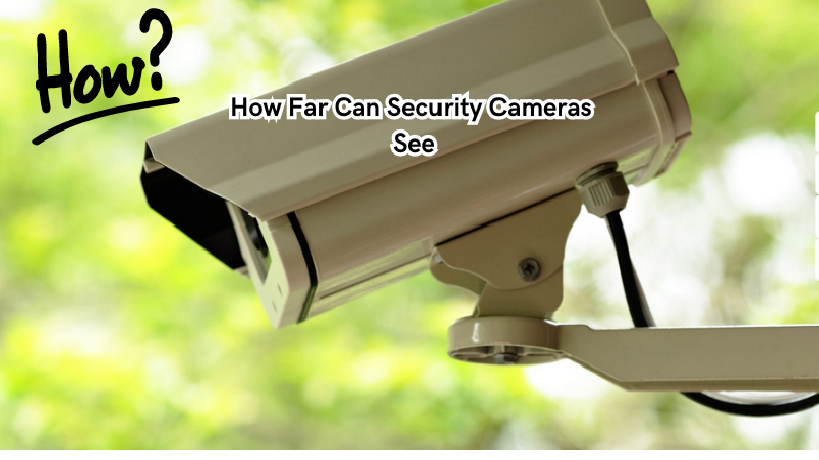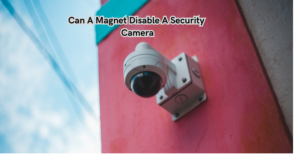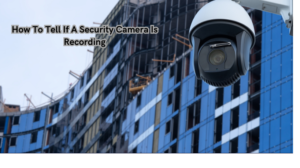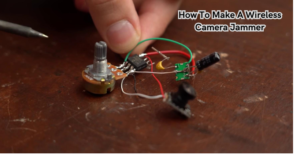Security cameras are now more prevalent than ever, with their use ranging from monitoring criminal activity to tracking traffic flow. They have become an essential part of modern security systems and are widely used in public places such as malls, banks, airports, and even residential areas. But have you ever wondered how far can these cameras see?
The range of a security camera depends on several factors such as the type of camera, location, and environmental conditions. In this article, we will discuss in detail how far security cameras can see and the factors that affect their range. We will also explore the different types of security cameras available in the market and which ones have a longer range.
Factors Affecting Security Camera Range
There are several factors that can influence how far a security camera can see. These include:
Camera Type:
The type of security camera used greatly affects its range. There are primarily two types of security cameras: analog and IP (Internet Protocol) cameras. Analog cameras have a limited range, with most models being able to capture clear images up to 100 feet away.
In contrast, IP cameras have a longer range and can capture images up to 300 feet away or more depending on the model. This is because IP cameras use digital technology and can transmit data over longer distances without losing quality.
Moreover, there are also high-definition (HD) cameras that have a wider field of view and can capture images from a distance of 1000 feet or more. However, HD cameras come at a higher cost and may not be suitable for all security setups.
Location:
Location plays a crucial role in determining how far a security camera can see. Outdoor cameras have a longer range than indoor ones, primarily due to the open space and fewer obstructions.
In outdoor settings, cameras with pan-tilt-zoom (PTZ) capabilities can cover an even wider range as they can be remotely controlled to move and zoom in on specific areas. On the other hand, indoor cameras may have a limited range due to furniture, walls, and other objects obstructing their view.
Moreover, the location of the camera’s placement also matters. A camera mounted at a higher position will have a longer range compared to one installed at ground level.
Environmental Conditions:
Environmental conditions such as lighting, weather, and time of day can also affect the range of a security camera. For instance, cameras with infrared night vision (IR) technology have a longer range at night when there is low ambient light.
Similarly, harsh weather conditions like heavy rain or snow may reduce the visibility of a camera’s lens, thereby decreasing its range. Additionally, the time of day can also impact a camera’s range. Cameras may have a shorter range at night due to low light conditions compared to during the day.
It is important to consider these factors when deciding on the placement and type of security cameras for your property. By understanding how these factors affect camera range, you can make an informed decision and ensure effective surveillance coverage for your specific needs.
Correlation Between Camera Range and Image Quality:
It is essential to note that as the range of a security camera increases, the image quality may decrease. This is because cameras with a longer range often have a lower resolution or may rely on digital zoom instead of optical zoom.
Digital zoom can result in pixelated images, making it challenging to identify individuals or objects captured from a distance. Therefore, it is crucial to strike a balance between camera range and image quality when choosing the right security camera for your needs.
Measuring Camera Range:
The range of a security camera is usually measured in feet or meters. However, it is important to note that this measurement can vary depending on the conditions and factors discussed above.
Some manufacturers may provide an estimated range for their cameras, but it is always best to test a camera’s capabilities in your specific environment before relying on those numbers.
In addition, the camera’s angle of view and lens size can also affect its range. A wider angle and larger lens size can increase a camera’s overall range by capturing more area within its field of view.
So thse were the factors influencing how far security cameras can see. Now let’s explore some of the different types of security cameras available in the market and their range capabilities.
Types of Security Cameras with Longer Range
There are various types of security cameras available in the market that have a longer range. These include:
PTZ cameras
The first type of security camera with a longer range is the PTZ camera. As mentioned earlier, these cameras have pan-tilt-zoom capabilities that allow them to cover a wider area. They are commonly used in outdoor settings and can capture images from a distance of up to 1000 feet or more.
Also, PTZ cameras can rotate 360 degrees and have a zoom capability of up to 30 times, making them suitable for larger properties that require high-quality surveillance from a distance.
Infrared cameras
Infrared (IR) cameras are another type of security night vision camera with a longer range. They use IR technology to capture images in low light conditions, making them ideal for surveillance at night.
IR cameras have a range of up to 300 feet or more, depending on the model and environmental conditions.
HD cameras
HD cameras are known for their high-resolution images and wider field of view. They can capture images from a distance of up to 1000 feet or more, but the image quality may decrease at longer ranges.
These cameras are ideal for larger properties that require detailed surveillance and can cover a wider area with fewer cameras compared to other types.
Thermal cameras
Thermal security cameras use thermal imaging technology to detect heat signatures, making them suitable for detecting intruders or tracking movement in low light conditions. They have a range of up to 300 feet or more and can capture images through smoke, fog, and other obstructions.
License plate recognition (LPR) cameras
License plate recognition (LPR) cameras are designed specifically to capture license plates for identification purposes. These cameras have a range of up to 30 feet or more and use specialized software to read and store license plate information.
They are commonly used in parking lots or entrances where vehicles need to be identified, making them a valuable addition to any security system.
These are just some of the types of security cameras with longer ranges available in the market. It is important to consider these options and their capabilities when choosing the right security camera for your specific needs.
Average Camera Range
The average range of a security camera can vary greatly depending on the type and model. Generally, outdoor cameras have a longer range compared to indoor ones due to their need for wider coverage.
However, an average outdoor security camera can capture images from a distance of 100-300 feet, while an average indoor infrared security camera may have a range of 50-150 feet.
It is important to carefully consider the layout and surroundings of your property when determining the average range needed for effective surveillance. In addition, consulting with a security professional can also help in selecting the right camera with an appropriate range for your specific needs.
Additionally, regularly maintaining and adjusting the cameras can also help improve their range and overall performance. So always keep these factors in mind when choosing and installing security cameras for your property.
Should Range Be the Only Consideration?
While the range of a security camera is an important factor to consider, it should not be the only one. Other factors such as image quality, durability, and weather resistance also play a crucial role in ensuring effective surveillance.
It is essential to find a balance between these different factors to choose the right camera that meets your specific needs and provides reliable security. Additionally, regularly maintaining and testing the cameras’ capabilities can help ensure optimal performance and extend their range over time.
In conclusion, understanding the different factors influencing camera range and exploring various types of security cameras available can help in making an informed decision when it comes to choosing the right security system for your property.
Tips for Extending Camera Range
There are a few tips that can help extend the range of your security cameras:
- Position the cameras at a higher point for wider coverage and longer range.
- Avoid placing the cameras near any obstructions that may hinder their view.
- Regularly clean and maintain the lenses to ensure clear images.
- Use additional lighting, such as floodlights or infrared illuminators, to enhance the camera’s range in low light conditions.
- Consider using a network extender or repeater for wireless night vision cameras.
- Install the cameras in a mesh network to extend their range and improve connectivity with the central monitoring system.
By following these tips, you can improve the overall range and performance of your security cameras for better surveillance and peace of mind. So, always keep these tips in mind when setting up a security camera system for your property.
Contact Kouland Technology, inc for Professional Camera Installation
If you are not familiar with security camera installation or need assistance in choosing the right type and range for your specific needs, it is always best to consult with a professional.
With Kouland Technology, Inc., you can expect fast and efficient installation services for your smart security cameras. Our team of expert technicians will not only install the cameras but also help you set them up on your mobile device for easy monitoring.
We offer competitive pricing and a commitment to customer satisfaction, so you can trust that we will do whatever it takes to make sure you are completely happy with our services.
Our Smart Security Cam Installation service starts at only $80 and can be easily booked through our website. We also offer additional services such as TV mounting and smart home device setup. Contact us today to secure your home with professional camera installation services.
So why wait? Book your appointment now and let us help you achieve peace of mind with our top-notch security camera installation services. Trust Kouland Technology, Inc. to keep your home and loved ones safe and secure.
Call us at 1(918)-704-7676 or visit our website to book your appointment today! Book Now!
FAQs
What is the maximum distance wireless security cameras can see during the day?
Wireless security cameras have varying viewing distances depending on several factors, such as the security camera’s sensor size, focal length, and resolution. Generally, a high-quality wireless security camera can see clearly up to distances of 40 feet with a standard 4.0 fixed lens, but some models equipped with advanced lenses and higher resolutions can see further, maintaining clarity for objects at a distance of up to 200 feet or more in ideal conditions (Source: Reolink; Mammoth Security).
How does night vision affect the range of security cameras?
Night vision significantly influences how far a security camera can see in low-light conditions. Night vision security cameras utilize infrared (IR) technology to illuminate the camera’s field of view in the dark, allowing the camera to capture clear images within its IR range. On average, night vision security cameras can see between 100ft to 200ft in complete darkness.
Can infrared security cameras see farther than regular wireless security cameras at night?
Yes, infrared security cameras often see farther at night compared to regular wireless security cameras without night vision capabilities. This is because infrared cameras use IR LEDs to illuminate the area in front of the camera, invisible to the human eye but detectable by the camera’s sensor.
Are there specific features to look for in a night vision security camera to maximize its viewing distance?
When choosing a night vision security camera to maximize its viewing distance, consider features such as the strength of its IR LEDs, the quality of its sensor, and its focal length. Cameras with powerful IR LEDs and a highly sensitive sensor can provide clearer images over greater distances in low light or no light conditions. Additionally, cameras with adjustable or longer focal lengths allow for a narrower field of view but increased detail at further distances.
Conclusion
In conclusion, Kouland Technology, Inc. offers a wide range of services to help you with your technology needs. From computer repair and software support to home theater setup and smart home device installation, our team of expert technicians can handle it all. Our goal is to ensure your complete satisfaction with our services and we will do whatever it takes to make sure you are happy with the results.
Don’t hesitate to contact us for any of your technology needs and book an appointment today. Trust Kouland Technology, Inc. for fast, reliable, and efficient services that you can count on. Thank you for choosing us as your technology partner!




